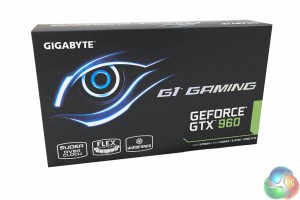
We have seen this artwork many times before – the neon style ‘eye' makes an appearance again on the GTX960 G1 Gaming box.
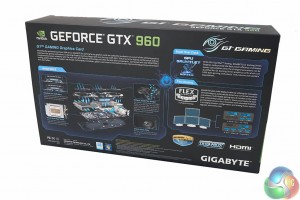
Gigabyte list a series of technical details on the back of the box.
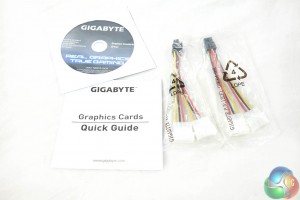
Inside the box are several power converter cables, a quick guide and a software disc.
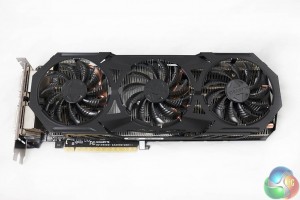
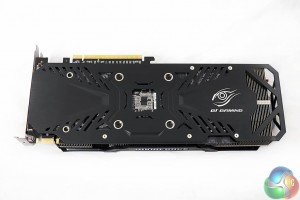
The Gigabyte GTX960 G1 Gaming is a hefty looking graphics card. The metal shroud is heavy and the three fans command the full width of the PCB. There is a great looking backplate on the PCB too, which is branded with the ‘G1 Gaming' name.
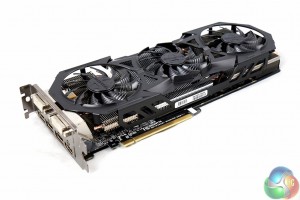
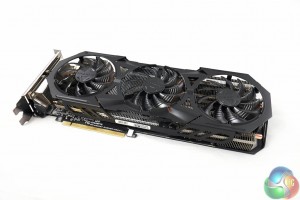
This is a very well built card, comprised from metal.
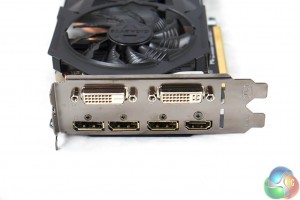
The card ships with two DVI (DVI-D and DVI-I) connectors, three DisplayPort connectors and a single HDMI connector. This HDMI port will handle 4K resolutions at up to 60hz. These are all full sized ports which is much better than having to rely on mini converter cables.
Gigabyte Flex Technology (Patent pending) is incorporated into this card. The card will automatically detect any connected monitors and configure multi display gaming – up to 4 monitors at the same time.
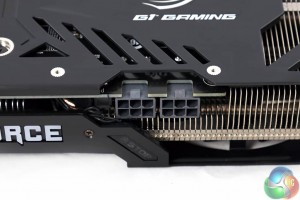
Nvidia's reference design uses a single 6 pin power connector, but Gigabyte have adopted two on this card, potentially to help improve overclocking stability. We will take a closer look at overclocking shortly.
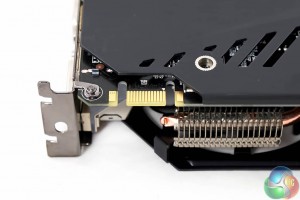
This solution is SLi capable, with one connector available for dual card configurations.
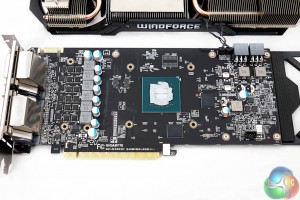
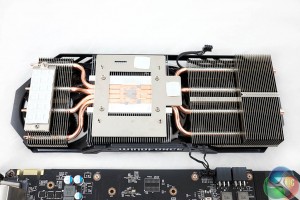
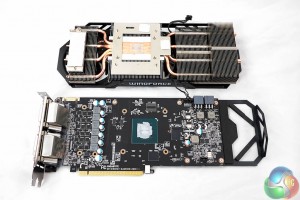
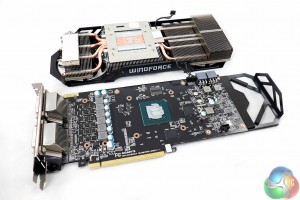
The Gigabyte GTX960 G1 Gaming ships with three fan headers – these control fan speeds and power delivery. The base of the cooler is a direct touch implementation, with four thick heatpipes running horizontally between rows of aluminum fins on either side. It is a substantial cooler. The fans will stop spinning when the power load drops.
The Gigabyte GTX960 G1 Gaming has a 6 Phase power design (supporting a maximum of 160 watts), while the reference board is limited to 3 phases (120 watts limit).
 KitGuru KitGuru.net – Tech News | Hardware News | Hardware Reviews | IOS | Mobile | Gaming | Graphics Cards
KitGuru KitGuru.net – Tech News | Hardware News | Hardware Reviews | IOS | Mobile | Gaming | Graphics Cards


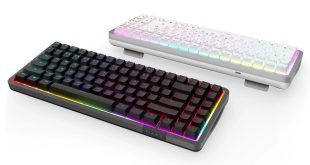
How did you guys manage to not compare it to it’s bigger brother – the GTX 970 G1? How does the 960 compare to the current generation of cards? What about 960 SLI?
From the power page “This card consumes more power than the Asus GTX960 Strix OC”. I believe as you don’t show that, I like others are confused thinking you mean the 750 Stix that’s shown. Perhaps clarify by saying “from the previous article” or put it’s results in the graph.
Given that Sapphire Dual X (965 Mhz) while high out-the-box, it’s a fairly “midland” construction, especially with Gigabyte G1 pushing the envelope with 1,304 Mhz Boost (the upper 25% of what GM206 customs) and 3 fans. I thought that Sapphire 285 held up very well. Even power while gaming here appears much different than other reviews only besting the 285 by 15% (stock vs. stock). Noise and cooling given that cooler/fans and lower power, didn’t strike me as significantly distinguishing.
Seeing that R9 285’s have gotten down into the $180’s (with rebate even lower,) this for a $230… I don’t see it. Nvidia didn’t offer much in marching the $200-1080p market forward, even to the point 285’s prices seem on the rebound.
When does GTX 965 comes out? Anyone knows?